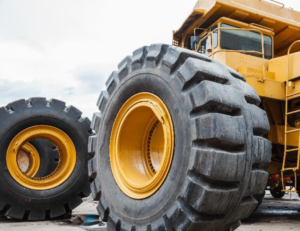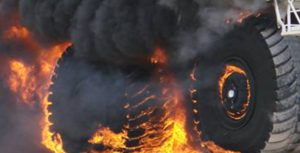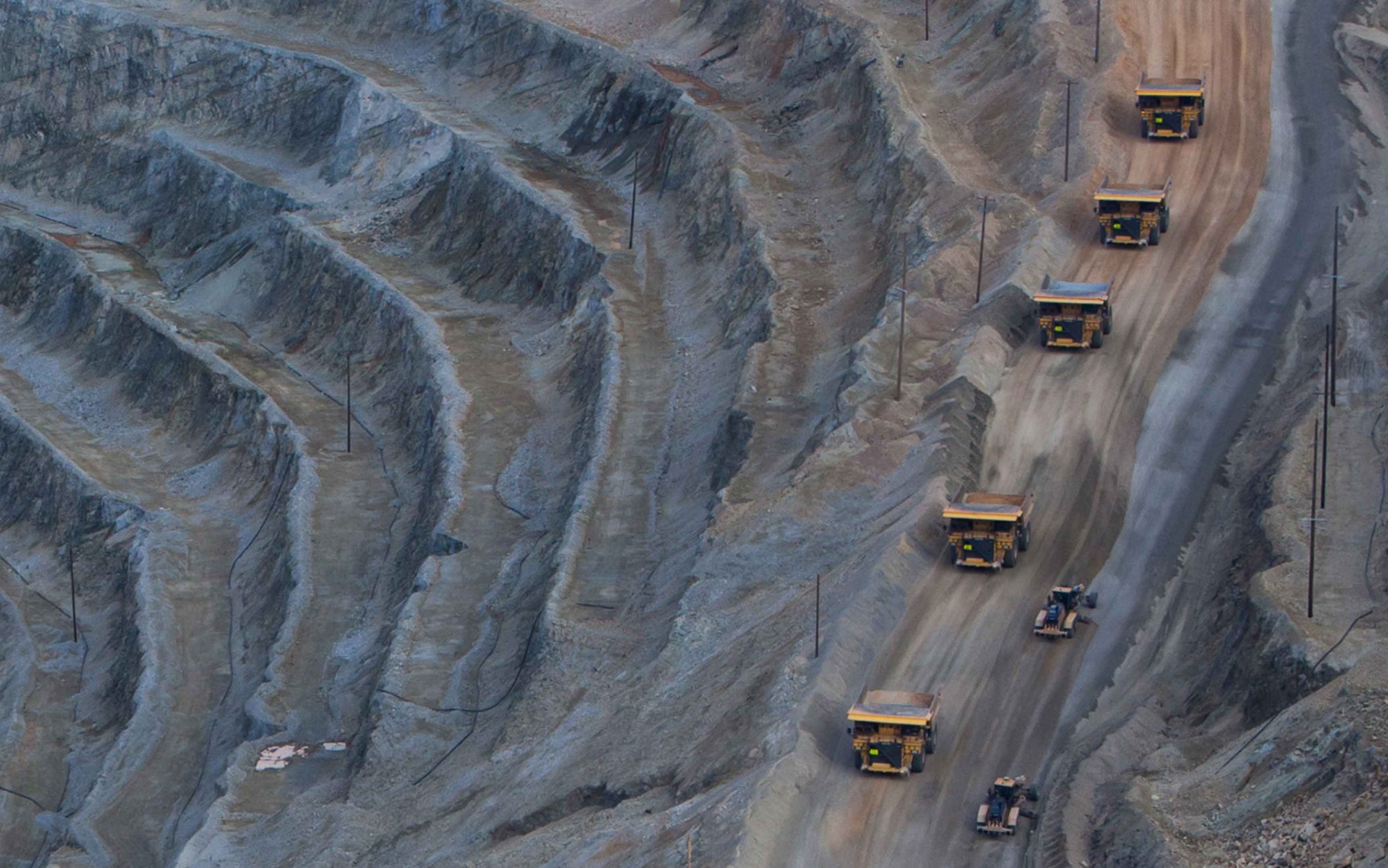The Earth Moving Equipment Safety Round Table (EMESRT) is the well known global ‘safety by design’ initiative established in 2006 by mining companies to fill the functional performance expectations gap between earth moving equipment users and equipment designers. In its just released 2021 Activity Report, EMESRT provides in-depth updates on its four current industry projects – Vehicle Interaction; Tyres and Rims Management; Mobile Equipment Fires Management; and Human Factors Design Diversity.
The member-based partnership embraces EMESRT’s purpose, namely to accelerate development and adoption of leading practice designs to minimise the risk to health and safety through a process of Original Equipment Manufacturer, contractor and user engagement. The ongoing members in 2021 include Teck, BHP, Alcoa, Anglo American, Glencore and Rio Tinto. The EMESRT Advisory Group (EAG) includes one representative from each member company. Its role is to identify and agree the priority work areas. The EAG then confirms the project strategy, work plans, budgets, and support. Each member contributes to the EAG based on their diverse experience, skills and availability. Technical Working Groups (TWG) are established by the EAG and are made of multiple member representatives, OEMs, third party suppliers, industry experts and others with relevant expertise.
Vehicle Interaction
Throughout 2021, EMESRT says it continued to collaborate with the ICMM Innovation for Cleaner Safer Vehicles Initiative – Vehicle Interaction by both attending and presenting at multiple virtual workshops. The EMESRT Vehicle Interaction TWG was active in its industry engagement throughout 2021. It provided input to the design and content of the ACARP (Australian Coal Industry Research Program) C26028 PDS Validation Framework Project to confirm a methodology for validating proximity detection technology. This project was a joint effort with Australian and South African researchers. In May 2021, EMESRT hosted industry webinars showcasing the ACARP C26028 project outcomes, attended by 74 people from multiple countries. The Vehicle Interaction TWG also contributed to several parts of ISO 21815 Earth-moving machinery – Collision warning and avoidance. In particular, the TWG contributed to Part 2: On-board J1939 communication interface, published by ISO in July 2021.
In 2022, the EMESRT VI Control Improvement Project will continue the delivery phase of the VI improvement strategy and broaden industry communication of the VI improvement strategy materials and guidance. With the ICMM, it will deliver regular topic-specific webinars to industry, such as on developing/understanding baselines (maturity framework). It will also publish the VI Control Framework and associated baseline assessment process, including the Self- Assessment Review Guideline. It will also review feedback from their practical application and update the surface functional performance scenario storyboards as well as develop, seek broader input and publish underground functional performance storyboards. It says it will continue engagement with the Minerals Council in South Africa on their project plan plus develop and publish a PDS Validation Framework Guideline. It will also review and update the work breakdown structure based on recent projects and experience in the field.
Through the formal liaison status EMESRT has been granted, it will engage with the ISO Technical Committee TC 127 (Earth-moving machinery), Subcommittee SC 2 (Safety, ergonomics and general requirements), and Working Groups 22 and 28 (Collision awareness and avoidance) and finally it will develop and publish the EMESRT Vehicle Interaction Project development journey 2013–2021.
Tyres and Rims Management
This EMESRT project was based on four drivers:
1. Significant fatalities amongst tyre maintenance technicians, mobile equipment operators, mobile equipment maintainers and emergency responders
2. Inadequate maintenance and operational practices that contribute to early service failures
3. Increasing expectations from regulators that mine operators can improve performance
4. The range and complex interdependency of the business inputs necessary for safe and productive operations using rubber tyre earth moving equipment.
EMESRT established a TWG in 2018 representing a broad range of industry stakeholders. The 41-member group (representing 21 organisations) meets regularly to further progress this industry project. It was recognised that further problem definition work on this complex and broad reaching issue was required. This was the catalyst behind several rounds of funding for two ACARP (Australian Coal Industry’s Research Program) Projects. ACARP is a unique and highly successful mining research program that has been running in Australia since 1992. The projects are:
1. C33005: Human Factors Aspects of Tyre Handling Equipment Design and Operation Examined within an EMESRT Control Framework Approach
2. C33007: Real-Time Safety Monitor and Alert System for Tyre Handling.

While both projects have been impacted by COVID-19, which limited collaboration by the industry contributors, steady progress continues to be made. On ACARP Project C33005 the project will involve a detailed human factors analysis of the design and use of tyre handling equipment and contribute to potential design improvements. Outcomes will include a storyboard, instructional videos and animated experiences that provide high-fidelity information and translate real-world equipment applications to inform designers, project partners and operational teams. The project will continue to demonstrate how human factors approaches can influence design in a useful and meaningful way when incorporated within the control framework. This project will support the ongoing implementation of ACARP Project C33007.
ACARP Project C33007 will install a real-time tyre and rim maintenance safety monitoring system (the Fingermark EyeCueTM system) that reduces hazardous exposure and eliminates the potential for significant harm. The overall objective is to develop user-driven technology to a commercially viable standard that is readily applicable across the mining industry. An additional test site for C33007 projects has been identified, and equipment installation commenced. While COVID-19 has so far prevented physical presence on-site the project teams are confident that site-access will be achievable in early 2022.
During 2021, EMESRT formed a tyre handler subgroup, which was instrumental in gathering information and categorising tyre handling operational workflows. The group included nine subject-matter experts representing seven entities. They identified 15 workflows and associated tasks, which were mapped against the EMESRT control framework (CFw) process and used to populate the online Tyre Handler Workflow Analysis Tool. The tyre handler workflow analysis tool is a central depository for workflows, tasks and subtasks of tyre handling equipment operations. Users can view and export workflows to a spreadsheet and use the outputs to review internal tyre handler operations, better understand inherited hazards, and consider operations.
In 2022, the EMESRT Tyre and Rim Management Project will develop, review and validate critical task problem statements, develop tyre handler animated functional performance scenario storyboards based on tasks identified, conduct on-site user interface testing and identify additional testing sites. It will also finalise and launch the online Tyre Handler Workflow Analysis Tool as well as release the first version of a tyre movement guideline (addressing lifting, transporting, fitting and removing, and safety zones). It will identify and recognise the parameters around each scenario documented by project C33005; develop and publish a tyre handler operational warning poster as well as develop a curated online Tyres and Rims Knowledge Hub.
Mobile Equipment Fires Management
The EMESRT Mobile Equipment Fires TWG achieved a significant outcome in December 2021, with the launch of Performance Requirement 4 (PR-4) – Mobile Equipment Fire Management. The launch followed extensive industry consultation, involving mining company representatives, OEMs, regulators, fire detection and suppression system providers, fire system designers, academics and researchers. EMESRT expanded its industry engagement during 2021, with several new organisations contributing to current industry projects. By the end of 2021, EMESRTs TWGs included 222 individuals representing 77 organisations.

The mobile equipment fire management project focus is on ways to understand and mitigate harm related to equipment fires as much as reasonably practical, including using design to address foreseeable human error. Using the heat, fuel and oxygen fire triangle, the group discussed and documented fire event areas of influence using the CFw approach. The TWG developed the EMESRT Mobile Equipment Fire Event Tree and modelled four areas of influence:
1. Mobile equipment design
2. Mobile equipment maintenance
3. Fire detection and suppression systems
4. Operating company emergency and crisis management.
Based on these areas of influence, the TWG developed the first draft of Performance Requirement 4 (PR-4) – Mobile Equipment Fire Management. PR-4 provides comprehensive information for mobile equipment designers, mining companies, fire detection and suppression system designers, and third-party suppliers and maintainers. PR-4 was developed through several iterations before being distributed to major OEMs for feedback on its delivery format and technical relevance. In the third quarter of 2021, several one-on-one webinars with OEMs provided an opportunity for detailed discussions about PR-4, including feedback and suggestions for improvement. The final draft of PR-4 was tabled at the EAG monthly meeting in November 2021 and unanimously approved for publishing.
In 2022, the Mobile Equipment Fire Management Project will implement a communication strategy to engage with all relevant industry stakeholders and present project outcomes at relevant industry forums. It will also analyse new incident reviews to identify elements not already contained in the CFw and update it as required. EMESRT will carry out SARG field trials and gain feedback on the range of self-review tools required (eg variations for underground, refinery, mine size); launch an online knowledge hub, and develop project management templates for operating sites (to be included on the knowledge hub). Finally it will develop and publish the EMESRT Mobile Equipment Fire Management Project Report 2019-2022.
Human Factors Design Diversity
Last but not least, this project is in the development and problem scoping phase to form a formal industry level project. Mining companies face a common problem in ensuring that earth moving equipment is designed to be operated and maintained without causing harm to workers. Since EMESRT began in 2006 it says it has seen an ever-increasing focus on health and safety improvement, and major global mining companies now have reasonably consistent expectations regardless of the mine locations around the world. But although recognised international standards exist to assist designers in providing equipment that accommodates workforce diversity, designers face significant challenges in applying this information to equipment design.

It adds: “Challenges may restrict potential workers who can operate and maintain the equipment from joining or remaining in the industry. General ergonomics and human factors approach for improving equipment design are well established. However, understanding how equipment design impacts safe and healthy operation and maintenance is not well understood. This is mainly influenced by the range of anthropometric body variations that diverse workforces present globally.”
In 2018, EMESRT convened a human factors workshop to review the objectives, design outcomes and potential unwanted events across all the design philosophies. In 2019, EMESRT recognised that further problem definition work on this issue was required, and agreed to facilitate a new industry project focusing on human factors design diversity that could:
▪ Improve earth moving equipment design by confirming significant anthropometric impediments for operators and maintainers in current equipment
▪ Adapt and develop human systems integration processes for practical application in the mining industry (eg human and equipment interfaces)
▪ Increase mining industry capability to apply systems and human factors engineering approaches to improve the design and operation of earth moving equipment
This EMESRT project was the catalyst for the successful funding of ACARP Project C28034, Mining Equipment Human Factors Design for Workforce Diversity. The project reported that: improving earth moving equipment design can remove significant anthropometric and other work demand impediments for establishing a more diverse mining workforce. “Design improvements can extend the working life of operators and maintainers by lowering the possibility of cumulative injuries through decreasing physical work demands. To achieve the above requires practical on-the-ground improvement of current operational practice and improvements in equipment design, particularly for maintenance tasks.“
The objectives of C28034 were to: identify and describe design issues with current mining equipment that are a barrier to workforce diversity; document and evaluate remedial control measures currently undertaken at sites; and communicate results to equipment designers and mine sites. In conducting the project, researchers visited seven surface coal mines in Queensland and New South Wales to conduct focus groups and task observations. Additional information was gathered from previously documented assessments of the manual tasks associated with earth moving equipment maintenance. The project information was used to populate an EMESRT CFw for equipment design for diversity. Two required operating states were defined:
1. Earth moving equipment can be safely and comfortably operated by people across a maximum range of anthropometric diversity
2. Earth moving equipment can be safely and comfortable maintained by people across a maximum range of anthropometric diversity.
The researchers reported considerable consistency across the focus groups and observations, which confirm concerns about the current design of mining equipment. “Aspects of earth moving equipment designs may unnecessarily restrict the diversity of potential employees who can operate and maintain the equipment, and in turn create elevated exposure to injury for those who currently undertake tasks associated with operating and maintaining the equipment. The observations also confirm the concerns are not limited to one particular mine operator, mine site or original equipment manufacturer.“
The project team will develop proposed equipment design improvement opportunities, using EMESRT’s control framework methodology for identifying end user problems and issues. In 2022, the Human Factors Design Diversity Project will review the ACARP Project C28034 outcomes and map an EMESRT industry landscape and work plan. Based on the research findings, it will review the EMESRT design philosophies and reference research examples of inadequate diversity tolerant designs and engage with OEMs to gain their input to areas that could be in the initial project focus scope. It will also gain EMESRT EAG approval for the initial phase
of the project scope and establish a TWG by engaging with key stakeholders (eg OEMs, third-party suppliers, industry experts, researchers and others with relevant expertise)
The team will also develop a beta version of the Human Factors Design Diversity Knowledge Hub; the hub will provide access to project documents, templates, case studies, presentations, links to websites and other useful reference information.











